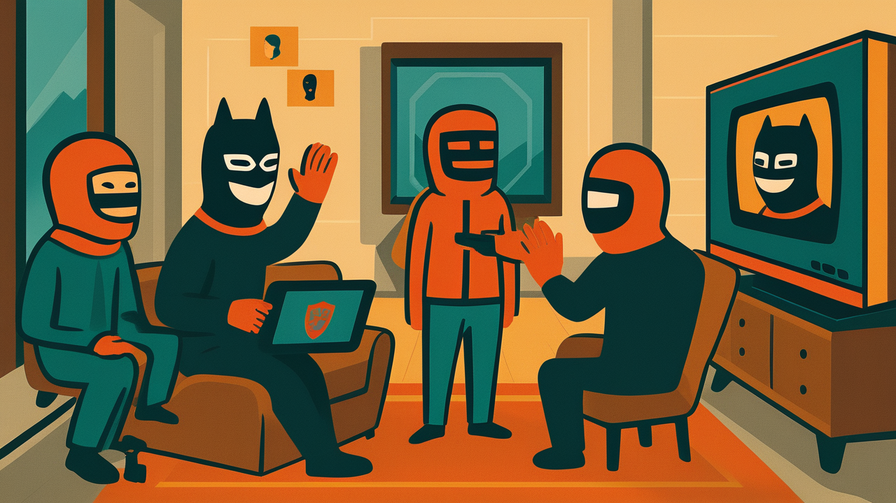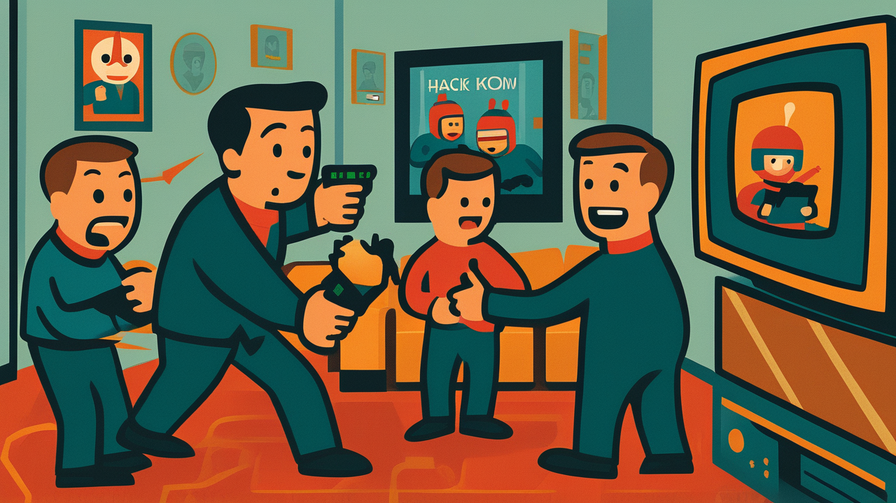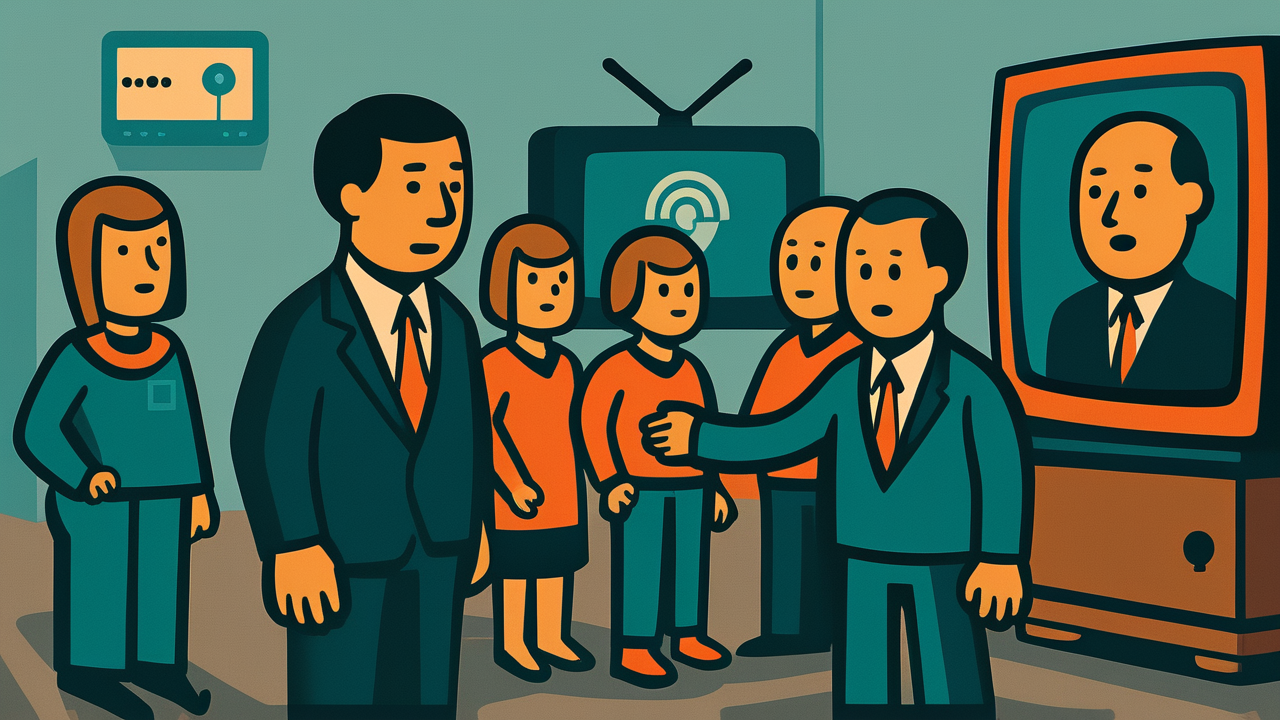[Disclaimer] This article is reconstructed based on information from external sources. Please verify the original source before referring to this content.
News Summary
The following content was published online. A translated summary is presented below. See the source for details.
Google has announced legal action against BadBox 2.0, which has been identified as the largest known botnet of internet-connected TVs ever discovered. Working with security partners HUMAN Security and Trend Micro, Google’s researchers uncovered this massive network of infected smart TVs and streaming devices. A botnet is a network of infected devices that hackers control remotely without the owners knowing. The BadBox 2.0 botnet has infected millions of Android-based TVs and TV boxes, turning them into zombie devices that criminals use for illegal activities like click fraud, cryptocurrency mining, and launching cyberattacks. The infected devices often came pre-loaded with malware from the factory, meaning consumers bought compromised products without knowing it. Google is now using legal channels to shut down the infrastructure behind this botnet and protect consumers from these cyber threats.
Source: Google Blog
Our Commentary
Background and Context

Imagine buying a new smart TV, setting it up in your living room, and unknowingly inviting hackers into your home. That’s essentially what happened to millions of people through BadBox 2.0. But what exactly is a botnet, and why should you care?
A botnet is like an army of zombie devices. Hackers infect computers, phones, or smart TVs with malware (malicious software) that lets them control these devices remotely. The scary part? Most people never know their device is infected. Your TV might look normal, play Netflix perfectly, but secretly it’s also mining cryptocurrency for criminals or attacking websites.
Smart TVs have become perfect targets for hackers because:
– They’re always connected to the internet
– People rarely update their TV software
– Many run on Android, which hackers know well
– Cheap TV boxes often have poor security
– Users don’t expect their TV to need antivirus protection
The “2.0” in BadBox 2.0 suggests this is an evolution of an earlier botnet, showing how cybercriminals continuously improve their attacks.
Expert Analysis
What makes BadBox 2.0 particularly dangerous is how the malware was distributed. Unlike typical botnets that spread through email attachments or downloads, these devices came infected straight from the factory. This means:
1. Supply chain attack: Criminals compromised the manufacturing or distribution process
2. Instant scale: Thousands of devices were infected before reaching stores
3. Trust exploitation: Consumers trust new products to be safe
4. Detection difficulty: Factory-installed malware is harder to spot
The infected devices were primarily cheap Android TV boxes sold online through platforms like Amazon, eBay, and AliExpress. These budget devices, often priced under $50, attracted consumers looking for affordable streaming solutions but came with hidden costs.
Security experts warn this represents a growing trend where IoT (Internet of Things) devices become weapons in cybercriminals’ arsenals. Your smart TV, doorbell, or even refrigerator could become part of a criminal network.
Additional Data and Fact Reinforcement
The scale of BadBox 2.0 is staggering:
– Estimated 7+ million devices infected globally
– Active in over 100 countries
– Generated millions in fraudulent ad revenue
– Used victims’ bandwidth and electricity without permission
– Connected to at least 200 different TV box models
How botnets harm consumers:
– Slower internet: Your connection is used for criminal activities
– Higher electricity bills: Devices work overtime mining cryptocurrency
– Privacy risks: Hackers can access your network
– Legal troubles: Your IP address might be linked to cybercrimes
– Device damage: Constant operation can overheat and break devices
Financial impact:
– Click fraud costs advertisers $35 billion annually
– Average household loses $100-300/year in electricity from cryptomining
– Bandwidth theft can exceed data caps, causing overage charges
Related News
The smart device security crisis is escalating:
– In 2024, researchers found 400,000 infected routers in the “Quad7” botnet
– Ring doorbell cameras were hacked to harass homeowners
– A fish tank thermometer was used to hack a casino’s network
– Smart light bulbs leaked Wi-Fi passwords
Tech companies are responding:
– Amazon removed hundreds of infected TV boxes from sale
– Google enhanced Play Protect to detect TV malware
– Roku and Apple TV emphasized their closed ecosystems’ security
– Governments consider mandatory security standards for IoT devices
Summary

The BadBox 2.0 botnet reveals an uncomfortable truth about our connected world: the devices meant to entertain us can be turned against us. When millions of smart TVs become weapons in a cybercriminal’s arsenal, it shows how vulnerable our digital lives have become.
Google’s legal action represents more than just shutting down one botnet – it’s about setting precedents and sending messages to criminals that tech companies will fight back. However, the real solution requires multiple approaches: better security in manufacturing, consumer education, and possibly regulation.
For consumers, the lesson is clear: that amazing deal on a no-name TV box might cost more than you think. The few dollars saved could result in a compromised home network, stolen data, or becoming an unwitting accomplice to cybercrime.
As we fill our homes with smart devices, we must remember that “smart” doesn’t automatically mean “secure.” Every connected device is a potential entry point for hackers, and we need to treat them with the same caution we’d use for our computers and phones.
Public Reaction
Consumer forums erupted with worried users asking how to check if their devices were infected. Many expressed anger at manufacturers and retailers for selling compromised products. Some called for stricter regulations, while others vowed to stick with name-brand devices despite higher prices. Tech-savvy users shared detection methods and removal guides.
Frequently Asked Questions
Q: How do I know if my TV is infected?
A: Signs include: unusual slowness, unexpected crashes, higher electricity bills, or your internet provider warning about suspicious activity. Check your TV’s network usage in settings – if it’s using data when idle, that’s suspicious.
Q: Can this affect name-brand TVs like Samsung or LG?
A: BadBox 2.0 primarily targeted cheap Android TV boxes, not major brands. However, any smart TV can theoretically be infected if not properly secured and updated.
Q: What should I do if my device is infected?
A: Disconnect it from the internet immediately. Try a factory reset, but if it came pre-infected, this won’t help. Consider replacing the device with a reputable brand.
Q: How can I protect my smart devices?
A: Buy from reputable brands and retailers, regularly update firmware, use strong Wi-Fi passwords, and consider putting IoT devices on a separate network from your computers and phones.


